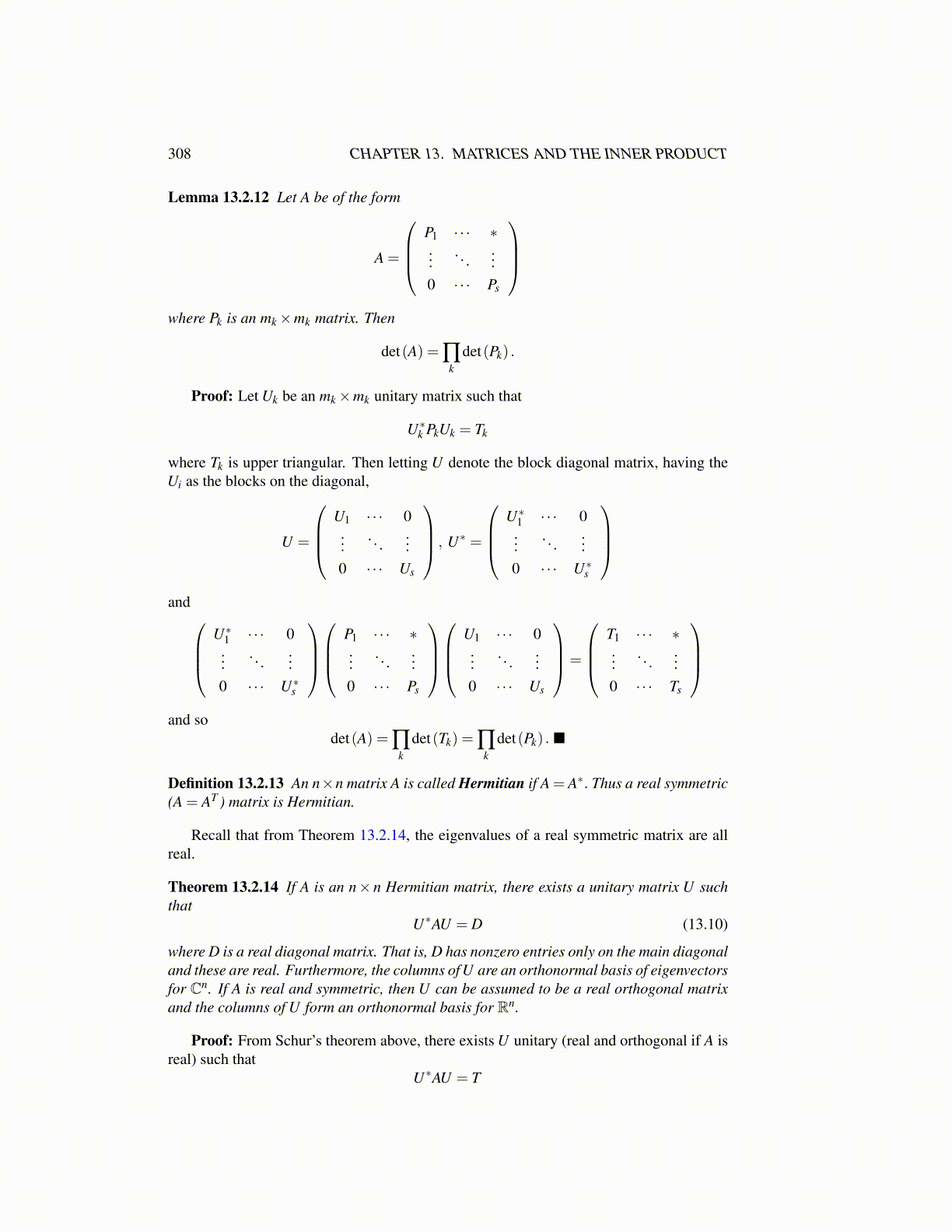
308 CHAPTER 13. MATRICES AND THE INNER PRODUCT
Lemma 13.2.12 Let A be of the form
A =
P1 · · · ∗...
. . ....
0 · · · Ps
where Pk is an mk×mk matrix. Then
det(A) = ∏k
det(Pk) .
Proof: Let Uk be an mk×mk unitary matrix such that
U∗k PkUk = Tk
where Tk is upper triangular. Then letting U denote the block diagonal matrix, having theUi as the blocks on the diagonal,
U =
U1 · · · 0...
. . ....
0 · · · Us
, U∗ =
U∗1 · · · 0
.... . .
...0 · · · U∗s
and
U∗1 · · · 0...
. . ....
0 · · · U∗s
P1 · · · ∗...
. . ....
0 · · · Ps
U1 · · · 0...
. . ....
0 · · · Us
=
T1 · · · ∗...
. . ....
0 · · · Ts
and so
det(A) = ∏k
det(Tk) = ∏k
det(Pk) . ■
Definition 13.2.13 An n×n matrix A is called Hermitian if A = A∗. Thus a real symmetric(A = AT ) matrix is Hermitian.
Recall that from Theorem 13.2.14, the eigenvalues of a real symmetric matrix are allreal.
Theorem 13.2.14 If A is an n× n Hermitian matrix, there exists a unitary matrix U suchthat
U∗AU = D (13.10)
where D is a real diagonal matrix. That is, D has nonzero entries only on the main diagonaland these are real. Furthermore, the columns of U are an orthonormal basis of eigenvectorsfor Cn. If A is real and symmetric, then U can be assumed to be a real orthogonal matrixand the columns of U form an orthonormal basis for Rn.
Proof: From Schur’s theorem above, there exists U unitary (real and orthogonal if A isreal) such that
U∗AU = T